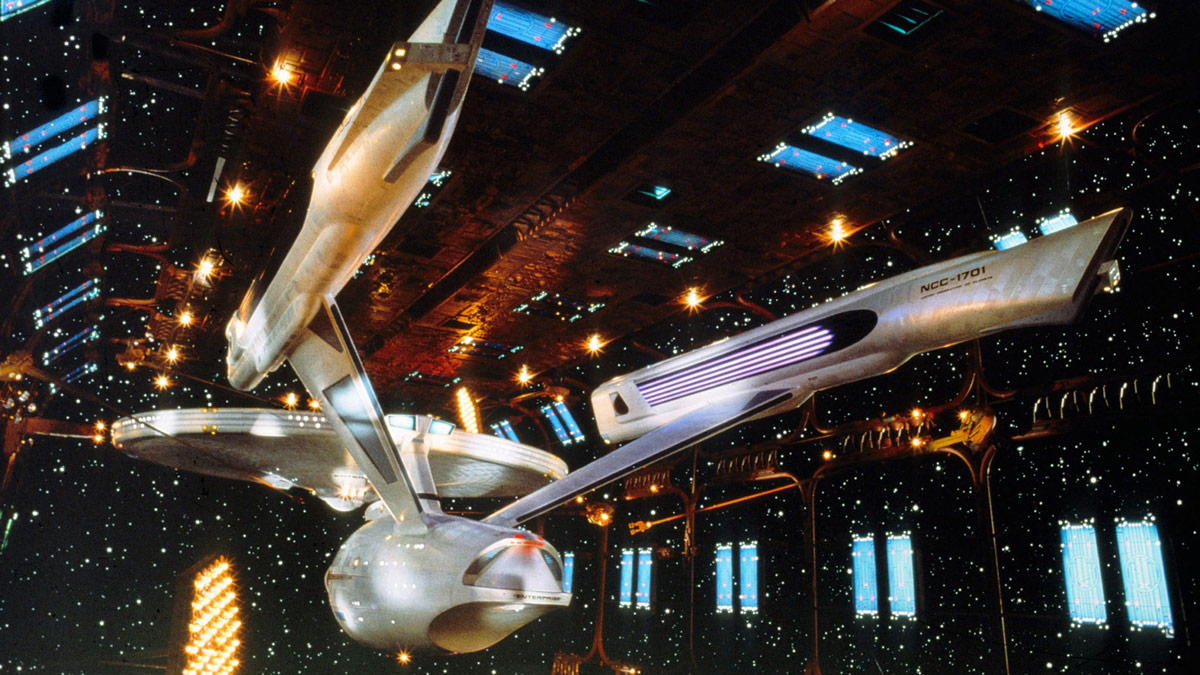
(c) Photofest / Getty Images
The struggles of the special effects staff who created the movie “Star Trek: The Motion Picture” and what they left behind Part 1
Birth of a TV series
Gene Roddenberry, an American television screenwriter and producer, came up with the idea for the science fiction television drama series Star Trek. He took the proposal to various broadcasting stations and production companies, but it was not accepted. The most promising candidate was Irwin Allen Productions, which was producing the maritime science fiction series Seaview (1964-1968), but they turned him down because "production of the science fiction series Lost in Space (1965-1968) had already begun for CBS."
The company that ultimately decided on the project was Desilu Productions(*1), the company behind Bravo the Martian (1963-1965) and Mission : Impossible (1966-1973). Star Trek began as a joint production between the company and Roddenberry's own Norwegian Corporation, and began airing on NBC in 1966.
What made the film groundbreaking was its bold science fiction setting of the United Federation of Planets, a huge organization that includes about 150 star systems, including Earth. The crew of the USS Enterprise, a space fleet ship the protagonists board, includes not only white Americans, but also people of various ethnicities, including Scottish, Russian, Asian, and African women. In addition, science officer Spock (Leonard Nimoy) is portrayed as half alien (Vulcan) and half human, giving the character depth.
"Star Trek: The Motion Picture: Space Mission" preview
Roddenberry portrayed the United Federation of Planets as an ideal world where discrimination against race, nationality, sex, etc.(*2) was completely abolished, and poverty and war were eradicated. However, outside the Federation of Planets, conflicts with hostile aliens such as the Klingons and Romulans continued, expressing the complex problems facing society at the time in the form of science fiction.
In addition, gadgets such as warp drives, transporters, force fields, handheld communicators, exploration and analysis devices such as tricorders, and diagnostic devices such as medical tricorders give a sense of realism to the depiction of the 23rd century. Although this type of setting was not uncommon in science fiction novels, it seemed to be too difficult for television viewers who were not familiar with science fiction, and the ratings were poor. As a result, the show was canceled after the third season in 1969.
However, the generation that watched the reruns (like Japan's Space Battleship Yamato and Mobile Suit Gundam ) became fans, and the series gradually became a boom. Conventions began to be held all over the country, and the number of enthusiastic fans, known as Trekkies or Trekkers, increased. Meanwhile, Roddenberry was not blessed with the opportunity to produce a new TV series(*3).
*1 In 1967, while Star Trek was airing, Desilu Productions was sold to Gulf and Western Industries (G+W). As G+W had also acquired Paramount Pictures the previous year, Desilu was renamed Paramount Television. In 1989, G+W sold off its non-media divisions and changed its name to Paramount Communications, but in 1994 it was acquired by cable TV giant Viacom. Viacom then acquired its former parent company CBS in 1999, and Paramount Television became CBS Paramount Television. In 2005, Viacom spun off Paramount Pictures as New Viacom, leaving its television production division under the umbrella of CBS. In August 2019, Viacom and CBS merged again, with the new company name becoming ViacomCBS.
*2 Sci-fi dramas that were broadcast around the same time, such as "The Seaview Submarine" and "Lost in Space," rarely featured non-white actors. This was common at the time.
*3 Roddenberry produced a number of science fiction and horror pilot films, including Genesis II (1973), The Questor Tapes (1974), Planet Earth (1974), and Spectre (1977), but none of them led to a series.

